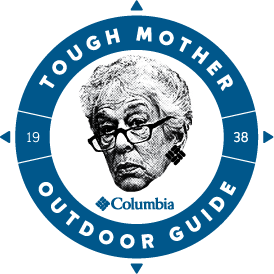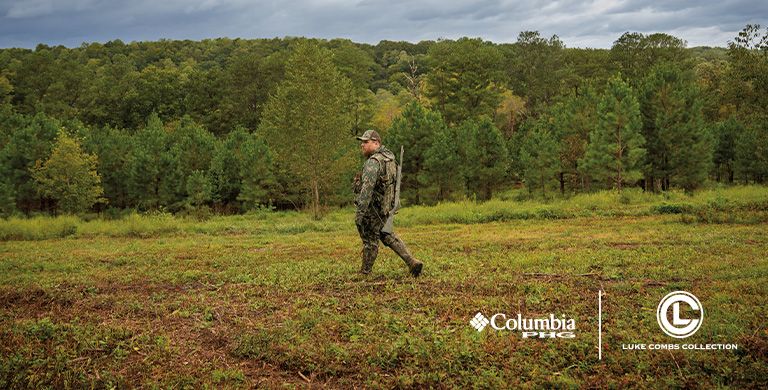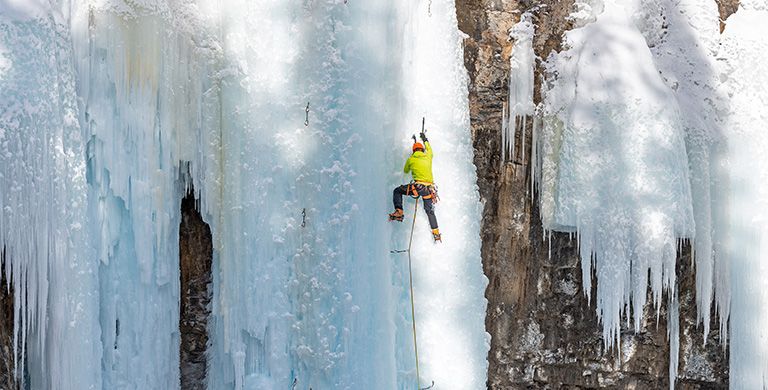OUTDOOR LIFE
Outdoor Adventure with Your Dog
Expert tips for epic outdoor excursions with your four-legged friend
BY: NANCY BOUCHARD
As Konrad Lorenz wrote in Man Meets Dog, “The dog is the most faithful of all animals, and it is also the one that reveals most clearly the loyalty and affection which are at the basis of every human relationship.” Your dog is with you to share your joys, setbacks, and aspirations. And of course, the fun of exploring the outdoor world. With preparation, training, and safety in mind, you can enjoy a lifetime of rewarding adventures together.
There’s something magic about stepping outside with a dog, something that connects you both to the wild and each other. John Muir, the great conservationist, noted, “In every walk with nature, one receives far more than he seeks—especially when walking with a dog.” It’s no surprise that dogs make great outdoor adventure partners, but as any responsible pet parent knows, they need extra care and preparation. While we may credit our furry friends with the toughness of Buck from White Fang or the endurance of the sled dogs in Eight Below, not every dog is suited for bear encounters or scaling mountain ranges. However, real dogs constantly surprise us with their outdoor feats—from search-and-rescue dogs braving avalanches to incredible adventurers like Gus, a mixed-breed pooch who hiked the entire 2,650 miles of the Pacific Crest Trail.
Dogs love walks, but some breeds and mixed breeds excel at specific activities. Labrador Retrievers are versatile athletes who love hiking, swimming, and running, while German Shepherds shine when it comes to backpacking and search-and-rescue. Border Collies and Poodle breeds can thrive in high-energy activities like running and agility, while Huskies, built for endurance, are perfect for skijoring and sledding. Dogs like Australian Shepherds, Jack Russells, and Weimaraners are famous for their energy and stamina. Labrador Retrievers, German Shorthaired Pointers, and English Setters often present outstanding pointing, flushing, and retrieving skills. Even smaller dogs, like Dachshunds, despite their short legs, love to run and explore, although their natural stubbornness makes them bad listeners. Every dog has its own adventure style, making them great companions for a variety of outdoor activities.
Whether you're already a dog owner or considering adopting a four-legged sidekick, this guide will help you embark on fun and safe outdoor experiences together.
There’s something magic about stepping outside with a dog, something that connects you both to the wild and each other. John Muir, the great conservationist, noted, “In every walk with nature, one receives far more than he seeks—especially when walking with a dog.” It’s no surprise that dogs make great outdoor adventure partners, but as any responsible pet parent knows, they need extra care and preparation. While we may credit our furry friends with the toughness of Buck from White Fang or the endurance of the sled dogs in Eight Below, not every dog is suited for bear encounters or scaling mountain ranges. However, real dogs constantly surprise us with their outdoor feats—from search-and-rescue dogs braving avalanches to incredible adventurers like Gus, a mixed-breed pooch who hiked the entire 2,650 miles of the Pacific Crest Trail.
Dogs love walks, but some breeds and mixed breeds excel at specific activities. Labrador Retrievers are versatile athletes who love hiking, swimming, and running, while German Shepherds shine when it comes to backpacking and search-and-rescue. Border Collies and Poodle breeds can thrive in high-energy activities like running and agility, while Huskies, built for endurance, are perfect for skijoring and sledding. Dogs like Australian Shepherds, Jack Russells, and Weimaraners are famous for their energy and stamina. Labrador Retrievers, German Shorthaired Pointers, and English Setters often present outstanding pointing, flushing, and retrieving skills. Even smaller dogs, like Dachshunds, despite their short legs, love to run and explore, although their natural stubbornness makes them bad listeners. Every dog has its own adventure style, making them great companions for a variety of outdoor activities.
Whether you're already a dog owner or considering adopting a four-legged sidekick, this guide will help you embark on fun and safe outdoor experiences together.

What Outdoor Activities Are Best for Dogs?
Dogs are natural adventurers. From hiking and backpacking to swimming, fishing, and even running or biking, the list of activities to enjoy with your canine companion is endless. But just like us, dogs need training before tackling outdoor activities. Whether you’re planning a casual hike or a rugged backcountry adventure, training is key.
- Hiking: Start with short, easy trails and gradually increase difficulty to build your dog’s stamina. Always bring a leash for safety, especially in wildlife-rich areas. Don’t be fooled by their enthusiasm—gradually build your dog’s stamina just like you would your own. Ensure your dog is well-trained and ready for the adventure.
- Watersports: Many breeds love water and are natural swimmers. Labrador Retrievers, Golden Retrievers, and Portuguese Water Dogs were bred for water work, making them excellent additions to any aquatic adventure. Dogs can join you swimming, fishing, canoeing, kayaking, and even paddleboarding. As animal behaviorist Dr. John Fisher wrote, “Dogs are born with a strong instinct to swim, but they still need to be taught how to do it safely.”
- Skiing and Skijoring: Gliding down snowy trails with your dog by your side is an incredible bonding experience. Many dogs love the freedom, speed, and excitement that come with skiing, while their enthusiasm motivates you to keep going. Skijoring, where your dog pulls you on cross-country skis, is another fun option for active dogs.
- Trail Running: If you’re a runner, your dog might like to join you for an outing. Make sure they understand trail etiquette and stay out of the way of other people on the trail. Frequent breaks for hydration and cooling off are also important.
- Hunting: Hunting with the help of four-legged companions is a centuries-old tradition that strengthens the bond between humans and canines. Dogs bring essential skills to hunting, including tracking, pointing, flushing, and retrieving. A well-trained hunting dog can make the experience safer and more efficient.
- Peak-Bagging with Dogs: Dogs have joined mountaineers, and hikers on some seriously impressive peaks. In the Swiss Alps, dogs frequently accompany climbers on iconic mountains like the Matterhorn, and in Colorado's Rockies, they tackle altitudes over 13,000 feet.

Collar vs. Harness: What’s Best for Outdoor Adventures?
For outdoor adventures, a collar or harness is essential. Collars and leashes are required by law in most public spaces, but harnesses provide better control for backcountry hikes or when you need to ensure your dog’s safety in rugged terrain. Joe Rainer, a search-and-rescue expert in the Italian Dolomites says “We make dozens of helicopter rescues a year and it is not unusual for people to hike with their dogs. While the person is the priority, we don’t want to leave a dog behind. People should always head into the mountains with the right gear for their dog: a leash, harness, muzzle. Even the best-trained dog can get disoriented when it comes to boarding a helicopter, especially if the owner is incapacitated. If you call for a rescue, make sure you tell the dispatcher if you have a dog so we can plan ahead.”
Voice Commands
Training your dog is the foundation of any successful outdoor adventure. Basic commands like “sit,” “stay,” and “come” are essential, especially when you’re off-leash. The more trained your dog is, the more enjoyable your adventures will be.
Start Slow: Build Confidence Gradually
Dogs need sport-specific training just like people. If you’re planning a long hike, don’t expect your dog to take on a 20-mile trek right away. Start with shorter trips and gradually increase distance and difficulty.

Pick a Dog-Friendly Destination
When choosing an outdoor destination, consider whether it’s suitable for your dog’s size, breed, and energy level. Dogs and pets are generally welcome on public lands administered by the Bureau of Land Management (BLM), allowing visitors to enjoy outdoor recreation alongside their furry companions. Kevin Oliver, Chief of BLM Recreation & Visitor Services Division explains that “There are some amazing trails for dogs and pets across the 245 million acres of public lands we manage, with some incredibly diverse, and varied landscape.” Navigating National Parks can be a bit trickier with pets. Cynthia Hernandez, spokesperson for the National Park Service, advises that before you head to a specific national park with your pet, visit the park’s website, nps.gov to get detailed information about what type of animal activity is allowed.
Know Your Dog’s Need for Recovery
Like humans, dogs need recovery time after outdoor activities. After a hike or swim, give your dog water, food, and rest in a shady place.
Essential Gear for Your Dog:
To ensure a safe and enjoyable adventure, here’s a list of essential gear for your dog.
- Dog Harness: For better control during hikes and activities.
- Leash: Always bring a leash, even if your dog is trained off-leash.
- Dog Backpack: Bigger dogs can help by carrying their own food and water.
- Booties: Protect paws from rough terrain or icy paths.
- Dog Life Jacket: Essential for water safety, especially in fast or open water.
- Collar with ID: Ensure your dog’s collar is up-to-date and always microchipped.
- Water and snacks: Pack a collapsable dog bowl for water and food.
- Poop Bags: Remember to Leave No Trace.
- Pro Tip: Bring a big pack that will fit your dog. Just like foot-travel with a kid, sometimes a ride home is necessary. With a big pack, if your dog gets tired, or experiences a sore paw, having a big pack can be a big help.

Emergencies and First Aid: Be Prepared
Your first aid kit should include bandages, gauze pads, antiseptic wipes, and tweezers. Most will work equally well on a pet as a person. But pack vet wrap, which won’t stick to fur but stays in place. Also, familiarize yourself with poisonous plants in the area and keep your dog away from raw fish. In the Pacific Northwest, salmon, trout, and many other fish can be infected with the organism Neo rickettsia helmonthoeca, which can be fatal to canines.
Get Out and Play
Whether you’re hiking, skiing, or simply enjoying a day at the park, having your dog by your side makes everything more exciting. As Ralph Waldo Emerson said, “The greatness of a nation and its moral progress can be judged by the way its animals are treated.” Have fun with your faithful and joyous fellow adventurer!
For your next adventure with your canine companion, consider Columbia Sportswear’s line up of dog friendly accessories and outdoor gear for yourself.



